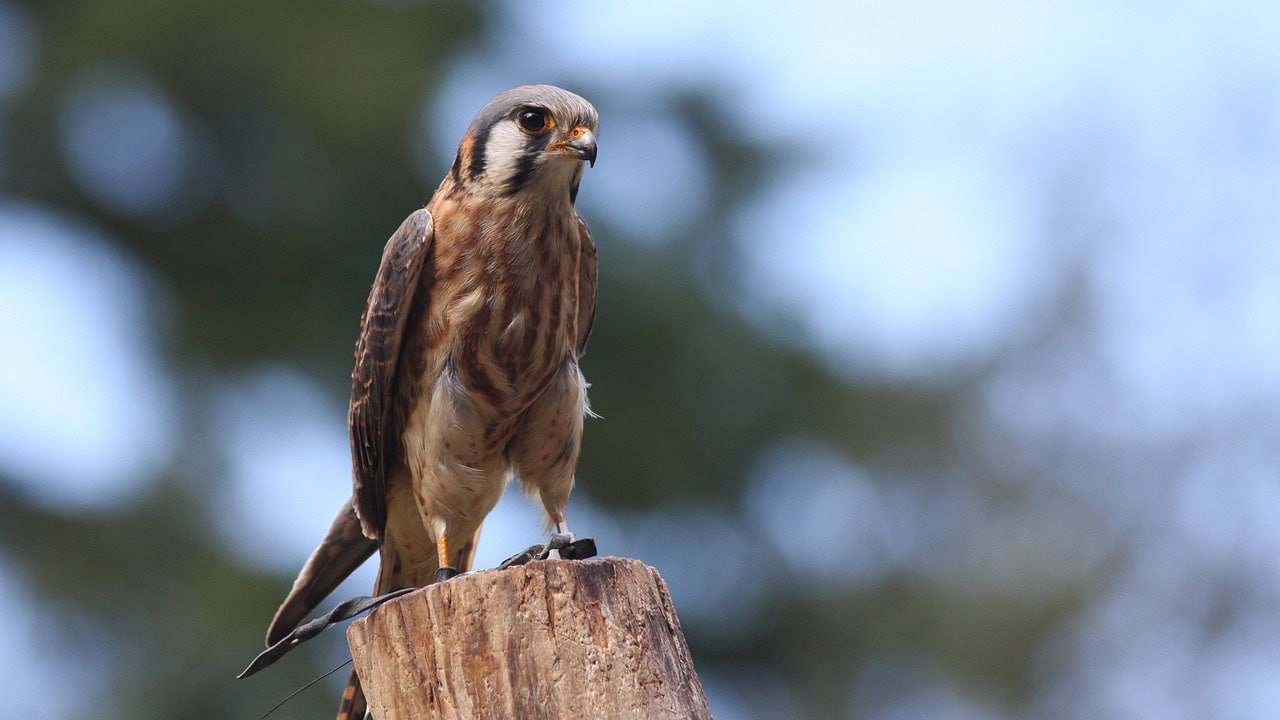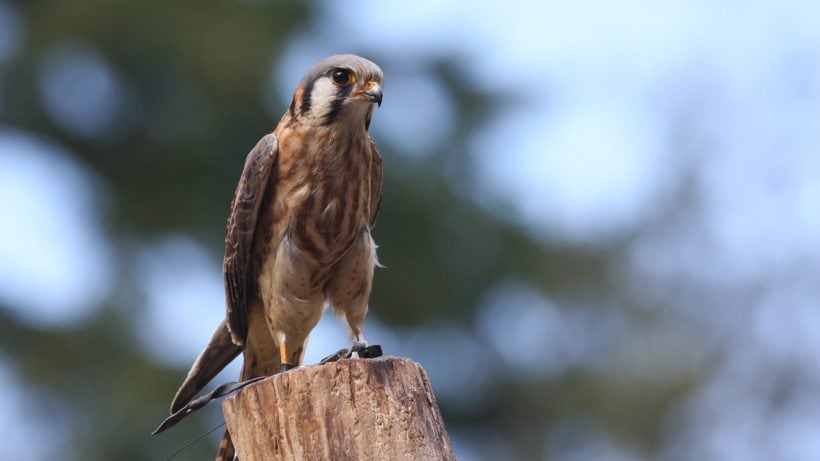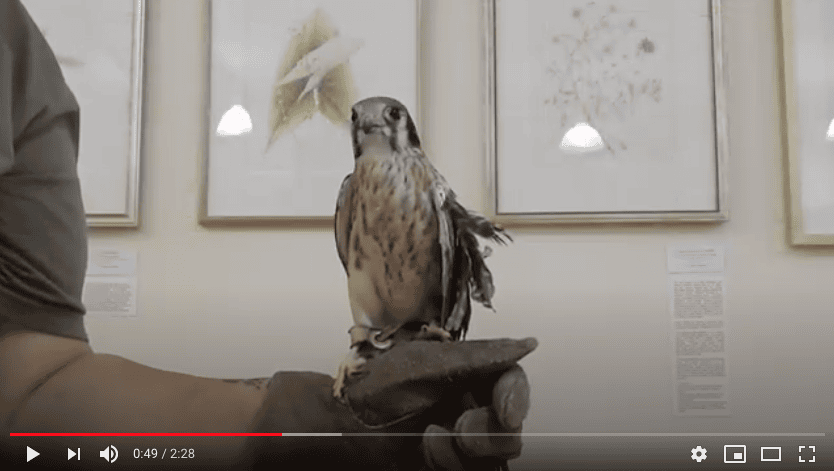Small but mighty: The American kestrel

The kestrel is the smallest and most common falcon in North America. At only 3-6 oz the American Kestrel may not seem like much of a hunter, but these little birds of prey are built to hunt.
Although they prefer meadows, prairie and farmland, kestrels can be found in urban settings like NYC. They can be found throughout the New World from Tierra del Fuego on the Southern tip of South America to the boreal forests of Alaska and Canada.
The American kestrel is one of only three bird of prey species that are sexually dimorphic – males and females look different. The female kestrel has reddish-brown wings with a streaked cream chest, whereas the male is more showy with slate-blue wings and a reddish-brown to white chest. Both sexes have black vertical stripes on the side of their faces. Females often are 10-15% larger than the males.
Like their bigger cousins, peregrine falcons and merlins, kestrels are built for aerodynamic flight and maneuverability. Although reptiles and small mammals are on the kestrel’s diet, they excel in catching flying insects and small birds. Caught in a good headwind, kestrels can flap their wings while keeping their tail and head in one place, hovering like a helicopter. The ability to keep their head still while in static flight allows them to focus on their prey.
Kestrels, like all birds, see ultraviolet light waves, something beyond the limits of human vision. Having the ability to see UV waves does have disadvantages. The resolution of sight is less than that of a human whose lens can block UV, however it allows the kestrel to see things invisible to humans. Bird plumage looks very different under UV light and flowers hold hidden secrets to help attract certain pollinators. For kestrels, UV sight allows them to track their prey by following urine trails. Urine contains phosphorus which illuminates under UV waves from the sun.
The population of American kestrels is in decline throughout their range. Many factors like habitat loss, predation, pollution, car mortality and nesting site competition from invasive European Starlings all contribute to the decline. Pesticide and rodenticide use targets the prey of the kestrel. Some of these poisons can kill kestrels outright. Other chemicals like DDT can affect eggshell thickness.
The American kestrel may be small, but for those who have had the pleasure of watching them hunt, they are impressive. Don’t let their size fool you, kestrels are built to hunt.

About the Author
Elissa Schilmeister, Environmental Educator and Volunteer Coordinator
Elissa is a home grown Teatowner, starting as a camper, and going on to be a camp counselor, volunteer, and now staff. Elissa is also a NYS licensed wildlife rehabilitator and EMT.




Leave a Reply